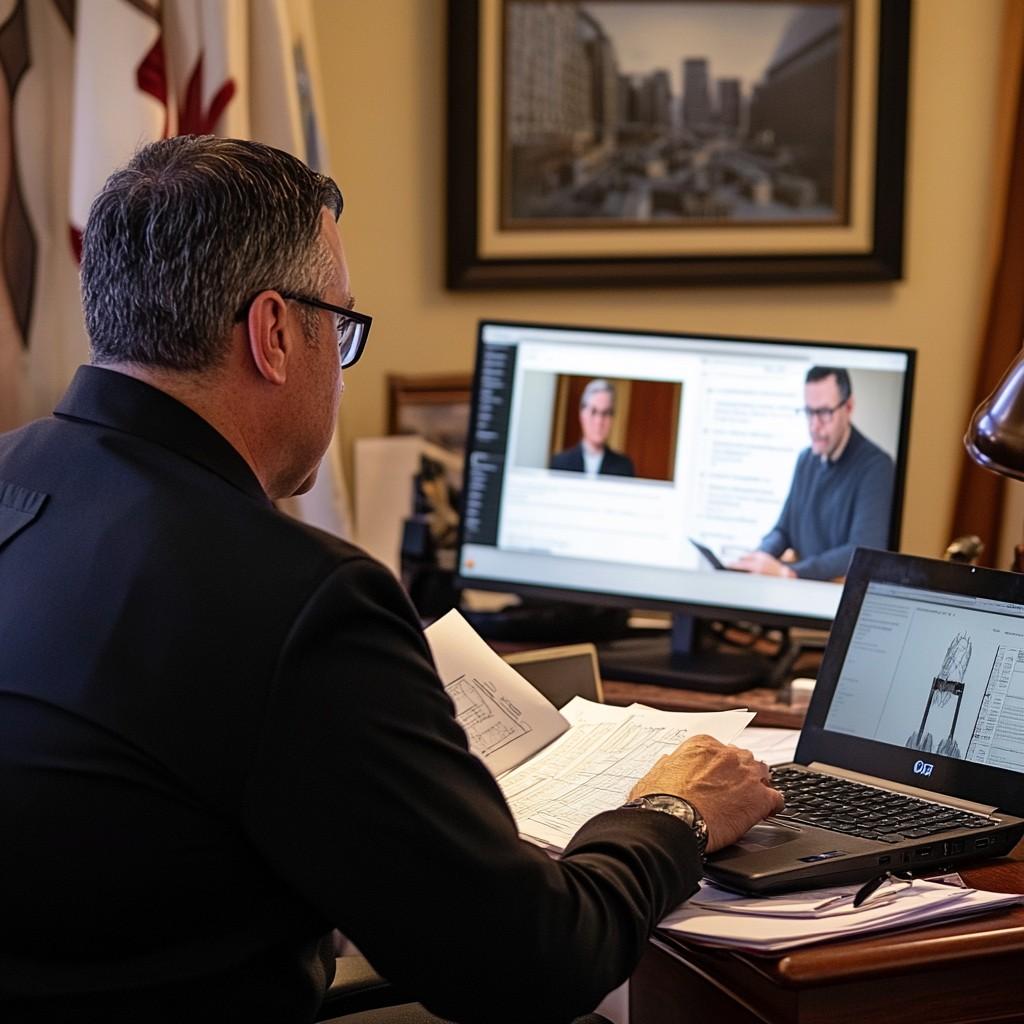When you have a brilliant invention, one of the first thoughts is often about protecting it through a patent. However, it’s essential to understand that you cannot patent an idea itself; you can only patent the implementation of that idea. This raises the question: can you proceed with the patenting process if your invention hasn’t yet materialized into a physical product? In this article, we’ll explore the patenting process, the role of prototypes, and when you might want to consult a patent attorney to ensure your idea is fully protected.
What Is a Prototype?
A prototype is a preliminary model or version of an invention. It represents an idea’s physical embodiment, showing how it will work or look in real life. Think of it as a sample or test version of your invention that allows for testing, refinement, and improvement before final production. Prototypes help inventors, investors, and manufacturers understand the functionality and design of the invention and may also be used to demonstrate how it works.
Prototypes vary in complexity and detail, from simple sketches or mock-ups to fully functioning models that simulate the final product. While useful, they are not mandatory for the patent process but can add significant value when bringing an invention to market.
Types of Prototypes
Before diving into the benefits of having a prototype, it’s essential to understand that not all prototypes are the same. Depending on the stage of development and the resources available, inventors may create different types of prototypes. Each type serves a unique purpose in the invention process, helping to test various aspects of the design, functionality, or market viability.
- Sketches or Paper Prototypes: These are basic drawings or blueprints that visually outline the invention. While they don’t demonstrate how the invention works, they help to illustrate the concept.
- Proof-of-Concept Prototypes: These models demonstrate that the idea is technically feasible. They focus on proving that the invention can work as intended but may not resemble the final product in form or aesthetics.
- Working Prototypes: As the name suggests, these are fully functioning versions of the invention that can perform all the intended tasks. They closely mimic the final product and help test and refine the functionality.
- Visual Prototypes: Detailed, non-working models designed to showcase the invention’s appearance. They can be used in presentations or marketing but don’t necessarily demonstrate how the invention works.
Benefits of Creating a Prototype
While not mandatory for filing a patent application, creating a prototype can significantly improve the chances of success for your patenting invention. Even if you’re filing a patent without one, a prototype can provide valuable insights and advantages during development, fundraising, and even patent application.
Here are some of the key benefits of creating a prototype:
- Improves Functionality: A prototype helps you see how your idea works in real life, allowing for adjustments and improvements, and an improved patent application.
- Clarifies Design Issues: By creating a physical model, you can identify and resolve design flaws that may not have been evident on paper.
- Attracts Investors: Investors are more likely to support an invention they can see and understand. A prototype offers a tangible demonstration of your idea.
- Assists in Manufacturing: Prototypes help manufacturers understand the production process and any challenges they might face when scaling up.
- Validates the Concept: Creating a prototype allows for real-world testing, proving that the idea is not just theoretical but viable.
What Are the Patent Requirements?
Although a prototype is not required for a patent application, specific legal requirements must be met for your invention to qualify for patent protection. The patent office will evaluate whether your invention meets these criteria before granting a patent. Understanding these requirements is critical to successfully navigating the patent process.
Here are the main requirements for patent eligibility:
- Patentable Subject Matter: Not everything can be patented. Your invention must fall into one of the categories of patentable subject matter, which typically includes new processes, machines, compositions of matter, or improvements of existing inventions. Specific abstract ideas, laws of nature, or mathematical formulas cannot be patented. If you have an invention that falls into the abstract area consult your attorney for further guidance.
- Novelty and Non-obviousness: The invention must be new, meaning that it hasn’t been publicly disclosed or patented before. Additionally, it must be non-obvious—the invention must represent a significant advancement over existing technologies and not just be a minor or obvious modification.
- The invention’s usefulness: The invention must have a practical purpose or utility. In other words, it must be useful in some way, solving a problem or providing a benefit. An idea that doesn’t have any practical application is unlikely to qualify for patent protection.
Documenting Your Idea: What You Need to Know

Whether or not you create a prototype, documenting your idea is crucial to the patent process. Proper documentation ensures that your idea is protected and provides evidence of the invention’s development. Keeping accurate and detailed records is essential to securing your intellectual property rights and protecting them if litigation ever ensues.
Here’s what you need to know about documenting your idea:
- Keeping Detailed Records: Make sure to maintain thorough records of your invention process, including sketches, descriptions, and any modifications you make. This documentation can serve as evidence of your idea’s originality and progress over time.
- Importance of Invention Disclosure: Invention disclosure forms are documents that outline the critical aspects of your idea and its development. These forms are often used internally by companies or law firms to track the progress of an invention and ensure all necessary steps are taken for patent filing. Heimlich Law can provide a template for the invention disclosure.
- Using Non-Disclosure Agreements (NDAs): If you need to share your idea with others, such as manufacturers, investors, or collaborators, it’s vital to have them sign a non-disclosure agreement (NDA). This legally binding document ensures that they cannot share or use your idea without your permission.
The Importance of Detailed Descriptions
The level of detail you provide is crucial in the patent application process. When submitting an application, your description must clearly explain your invention in a way that allows others skilled in the art to practice your invention without undue experimentation. A detailed description outlines your idea’s structure, function, and purpose, giving the patent examiner a clear picture of what you’re trying to protect. The claims in the application define what you are wanting to protect.
It helps to define the scope of your patent and serves as evidence that your idea is not just a vague concept but a well-thought-out innovation. Without this clarity, your patent application could be rejected or leave gaps that others might exploit to develop similar inventions.
Common Myths About Patenting Ideas
Many misconceptions surround the process of patenting an idea. Whether you’re an experienced inventor or just starting, separating fact from fiction is essential to avoid unnecessary roadblocks. Below are some common myths about patents that often mislead people.
Myth # 1: You Need a Prototype to Patent
Contrary to popular belief, you don’t need a working prototype to file for a patent. The U.S. patent system is designed to protect ideas, even if they haven’t been physically built yet. While having a prototype can help demonstrate your idea’s functionality and potential, it’s not a requirement. The key is providing a detailed, well-documented description explaining how the invention works.
Myth # 2: Patents Guarantee Commercial Success
Patenting your idea protects your intellectual property but doesn’t guarantee that your invention will be commercially successful. The marketability of a product depends on various factors, such as consumer demand, production costs, and competition. While a patent prevents others from copying your invention, it does not ensure that your product will succeed in the marketplace.
Myth # 3: A Patent Is All You Need
Filing for a patent is only one step in the journey of bringing an idea to life. A patent gives you legal protection, but you’ll still need to focus on other aspects like funding, production, marketing, and distribution. Additionally, having a patent doesn’t mean someone won’t infringe on it—you may need to enforce your rights through litigation if someone violates your patent.
How Patent Attorneys Can Assist You

Our team of intellectual property lawyers at Heimlich Law PC is dedicated to guiding you through every stage of the patent process. Whether you’re a first-time inventor or a seasoned professional, we can offer tailored legal advice to protect your ideas and innovations.
Here are some of the key ways we can assist you:
- Patent Prosecution: Patent prosecution involves all interactions with the patent office, from filing your application to responding to office actions. Our attorneys manage the entire process, ensuring that your application meets all legal requirements and has the best chance of success. We also provide expert guidance if revisions or additional information are needed during the review process.
- Legal Expertise: Navigating patent law can be challenging, with technicalities that are difficult to understand. Our legal team has years of experience in patent law, ensuring your application complies with current regulations. We stay updated on legal changes and patent trends so you get the most comprehensive legal protection available.
- Drafting and Negotiation: A patent application requires skill and precision to cover every detail. Our attorneys have the expertise to draft robust applications that stand up to scrutiny. We also assist in negotiating licensing agreements and contracts, helping you maximize the value of your patent.
- Enforcement and Litigation: If someone infringes on your patent, taking action is critical. We can help enforce your rights through litigation or settlement negotiations. Our litigation services cover everything from cease-and-desist letters to courtroom representation.
- Portfolio Management: If you have multiple patents, managing them effectively is critical to maximizing their value. We offer patent portfolio management services, helping you monitor your patents, renew them as necessary, and explore opportunities for licensing or selling intellectual property rights.
Securing Your Intellectual Property
Protecting your ideas is essential when you’ve invested time and effort into creating something new. Legally securing your invention ensures that others can’t take advantage of your hard work. While the process may seem overwhelming, acting helps you safeguard your rights for the future.
At Heimlich Law PC, we encourage all inventors to protect their creations. Don’t let someone else claim what you’ve developed—our team is here to help guide you through the legal process and make sure your innovation stays yours.
If you’re ready to secure your idea, contact Heimlich Law PC today. Our patent attorneys will guide you through each step, ensuring your invention is legally protected so you can confidently bring it to market.




